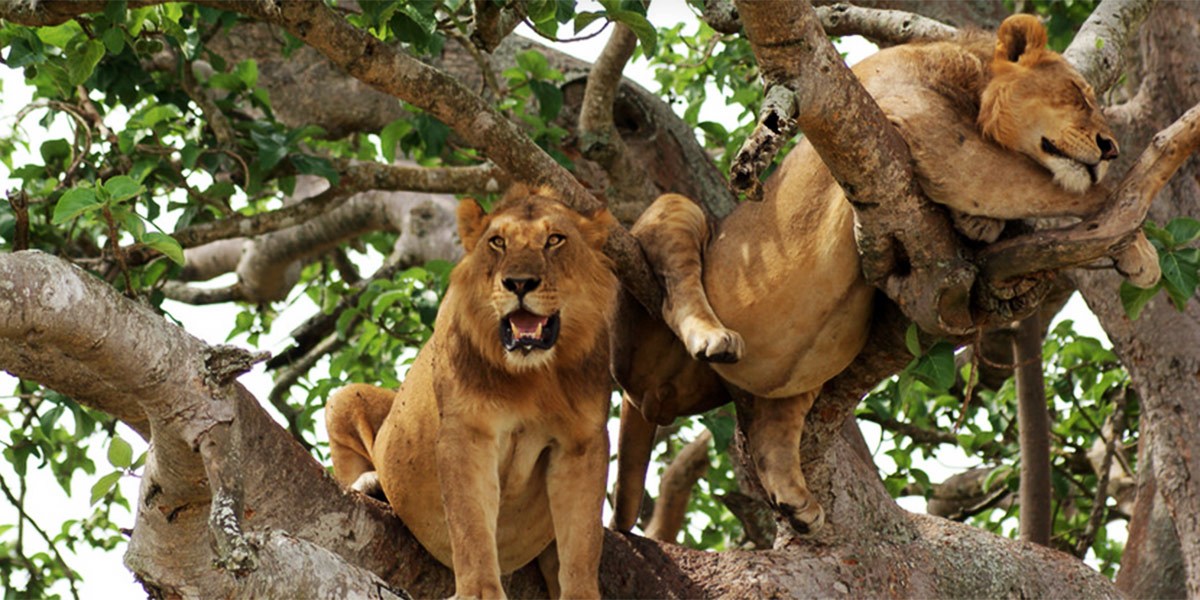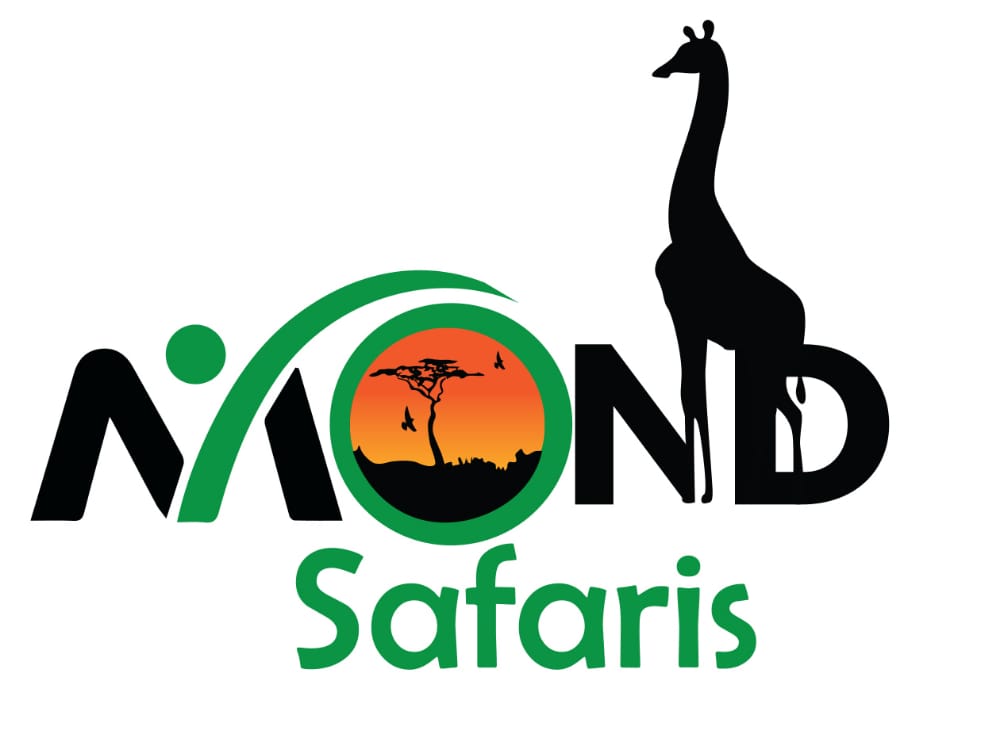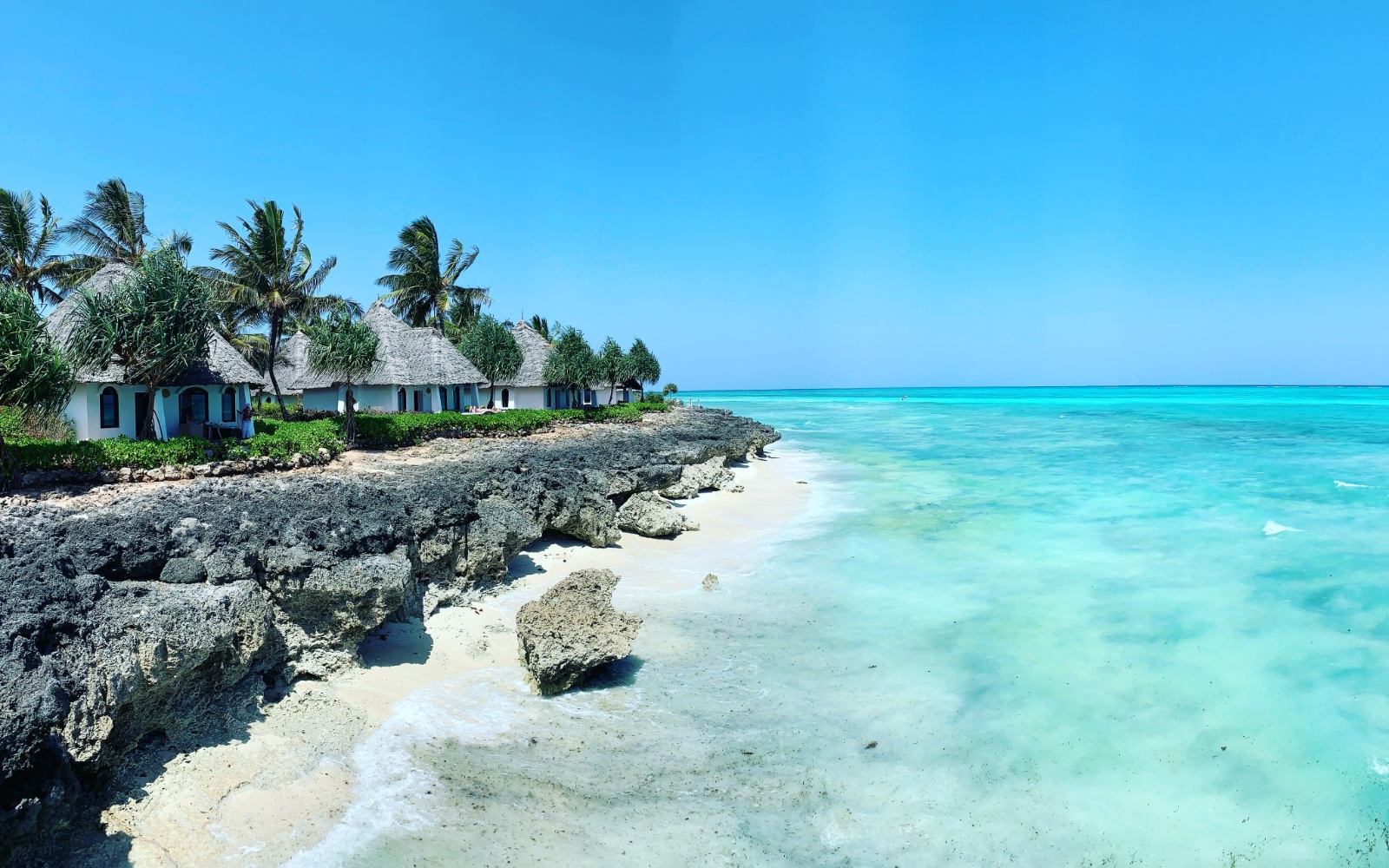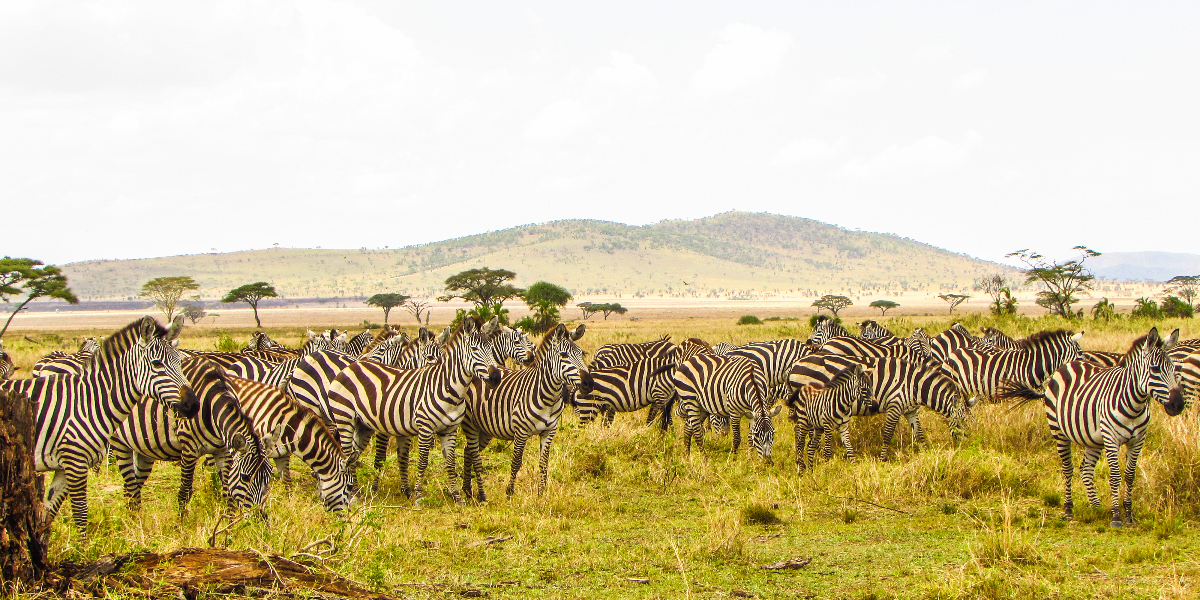Embark on an African adventure like never before as we unveil the top 7 best…

wildlife safaris Uganda
Exploring the Untamed Beauty: Discover the Best Wildlife Safaris in Uganda

wildlife safaris Uganda: Embark on a thrilling adventure through the untamed beauty of Uganda’s wildlife safaris, where every step brings you closer to the wonders of nature. From the awe-inspiring gorillas of Bwindi Impenetrable National Park to the majestic lions of Queen Elizabeth National Park, Uganda offers a truly unique and unforgettable experience for wildlife enthusiasts. With its diverse landscapes, ranging from lush forests to vast savannahs, this East African gem is home to a remarkable array of wildlife species. Imagine the thrill of tracking chimpanzees in Kibale Forest, witnessing the great migration of zebras and wildebeests in Kidepo Valley National Park, or spotting the elusive tree-climbing lions in Ishasha. Whether you’re a seasoned safari-goer or a first-time adventurer, Uganda’s wildlife safaris promise to be an unforgettable journey into the heart of Africa’s most captivating wilderness. Get ready to immerse yourself in the untamed beauty of Uganda and witness nature at its most raw and breathtaking.
Popular National Parks for Wildlife Safaris in Uganda
Uganda is home to several national parks that offer exceptional wildlife safari experiences. Bwindi Impenetrable National Park is undoubtedly the crown jewel, renowned for its population of endangered mountain gorillas. Tracking these magnificent creatures through dense forests is a once-in-a-lifetime opportunity to observe their behavior up close.
Queen Elizabeth National Park is another must-visit destination, where you can spot the famous tree-climbing lions of Ishasha. The park is also home to a diverse range of wildlife, including elephants, buffalos, and over 600 bird species. For those interested in chimpanzee tracking, Kibale Forest National Park is the place to be. Trek through the forest and witness these intelligent primates in their natural habitat.
Kidepo Valley National Park, located in the remote northeastern region of Uganda, offers a truly unique safari experience. Here, you can witness the incredible migration of zebras and wildebeests, as well as spot lions, elephants, and giraffes against the stunning backdrop of the Narus Valley.
No wildlife safari in Uganda would be complete without a visit to Murchison Falls National Park. As the largest national park in Uganda, it is home to an abundance of wildlife, including the rare Rothschild’s giraffe and the powerful Nile crocodile. Witness the breathtaking sight of the Nile River plunging through a narrow gorge, creating the iconic Murchison Falls.
Why Uganda is a Top Destination for Wildlife Safaris
Uganda’s reputation as a top destination for wildlife safaris is well-deserved. The country’s commitment to conservation and its diverse ecosystems make it a haven for wildlife enthusiasts. Uganda’s national parks are teeming with an incredible variety of wildlife, including the famous Big Five – lions, elephants, buffalos, leopards, and rhinos.
One of the main attractions of Uganda’s wildlife safaris is the opportunity to track and observe mountain gorillas. Bwindi Impenetrable National Park is home to almost half of the world’s remaining mountain gorilla population, making it one of the best places to see these gentle giants in their natural habitat. The gorilla trekking experience is carefully regulated to minimize disturbance and ensure the gorillas’ well-being.
In addition to gorillas, Uganda offers a rich diversity of wildlife. From the playful chimpanzees of Kibale Forest to the rare tree-climbing lions of Ishasha, there is always something new and exciting to discover. The country’s national parks are also a haven for birdwatchers, with over 1,000 bird species recorded, including the iconic shoebill stork.
How Do I Plan Wildlife Safaris in Uganda?
Planning a wildlife safari in Uganda can be an exciting and rewarding experience. Here are some essential steps to help you plan your dream safari:
1. Research and choose the national parks you want to visit: Each national park in Uganda offers a unique safari experience. Do some research to understand the wildlife species present in each park and choose the ones that align with your interests.
2. Determine the duration of your safari: Decide how many days you want to spend on your safari. For a comprehensive wildlife experience, a minimum of 7-10 days is recommended.
3. Contact a reputable tour operator: Working with a trusted tour operator can make your safari planning much easier. They can help you with everything from organizing permits for gorilla and chimpanzee tracking to arranging transportation and accommodation.
4. Obtain the necessary permits: Some activities, such as gorilla and chimpanzee tracking, require permits. These permits are limited in number and need to be secured well in advance. Your tour operator can assist you in obtaining these permits.
5. Book accommodation: There are various accommodation options available near the national parks, ranging from luxury lodges to budget campsites. Consider your budget and preferences when choosing your accommodation.
6. Pack appropriately: Pack lightweight, comfortable clothing suitable for both warm and cool temperatures. Don’t forget essentials such as sunscreen, insect repellent, a good pair of binoculars, and a camera to capture your safari memories.
7. Prepare for the physical demands: Wildlife safaris involve a fair amount of physical activity, including trekking and walking. Ensure you are in good health and consult with your doctor about any necessary vaccinations or medications.
By following these steps and working with a reputable tour operator, you can plan a wildlife safari in Uganda that exceeds your expectations.
What to Pack for Your Wildlife Safaris in Uganda
Packing the right essentials for your wildlife safari in Uganda is crucial to ensure a comfortable and enjoyable experience. Here are some items you shouldn’t forget to pack:
1. Lightweight, breathable clothing: Pack comfortable clothing suitable for both warm and cool temperatures. Opt for neutral colors that blend in with the surroundings and avoid bright colors that may disturb the wildlife.
2. Sturdy walking shoes: A good pair of walking shoes is essential for trekking through the national parks. Choose shoes that provide comfort and support for long walks on uneven terrain.
3. Hat and sunglasses: Protect yourself from the sun by wearing a wide-brimmed hat and sunglasses. This will not only shield you from the sun’s rays but also enhance your wildlife viewing experience.
4. Insect repellent: Uganda is home to mosquitoes and other insects, so it’s important to protect yourself from bites. Pack a high-quality insect repellent that contains DEET and apply it regularly.
5. Waterproof jacket: Weather conditions in Uganda can be unpredictable, so it’s wise to pack a lightweight waterproof jacket. This will keep you dry in case of rain showers.
6. Binoculars: A good pair of binoculars will enhance your wildlife viewing experience by allowing you to observe animals from a distance. Look for binoculars with a higher magnification power for better clarity.
7. Camera and spare batteries: Capture the unforgettable moments of your safari by bringing a camera with you. Make sure to bring spare batteries and memory cards to avoid running out of power or storage space.
Remember to pack light and only bring the essentials. Most lodges and camps provide laundry services, so you can easily wash your clothes during your safari.
What to Expect on a Wildlife Safaris in Uganda
wildlife safaris in Uganda offer a unique and immersive experience that will leave you in awe of nature’s wonders. Here’s what you can expect:
1. Incredible wildlife sightings: Uganda’s national parks are home to a diverse range of wildlife. From gorillas and chimpanzees to elephants, lions, and giraffes, you can expect to encounter some of Africa’s most iconic animals in their natural habitat.
2. Expert guides: During your wildlife safari, you’ll be accompanied by knowledgeable guides who are familiar with the parks and their inhabitants. They will share their expertise and ensure your safety while providing insights into the behavior and ecology of the animals you encounter.
3. Close encounters with gorillas: Gorilla trekking in Bwindi Impenetrable National Park is a highlight of any safari in Uganda. Under the guidance of experienced trackers, you’ll venture into the forest to search for these gentle giants. Once you find them, you’ll have the opportunity to spend a precious hour observing their behavior up close.
4. Challenging terrain: Uganda’s national parks feature diverse landscapes, ranging from dense forests to open savannahs. Be prepared for some physical exertion, especially during gorilla and chimpanzee tracking, as you may need to hike for several hours in challenging terrain.
5. Cultural interactions: Uganda is not just about wildlife; it’s also a country rich in cultural heritage. Many safaris offer opportunities to visit local communities and learn about their traditions and way of life. This cultural immersion adds another dimension to your safari experience.
6. Unforgettable sunsets: As the day comes to an end, you’ll witness breathtaking sunsets over the African savannah, painting the sky with vibrant hues. These magical moments create the perfect backdrop for capturing stunning photographs and reflecting on the beauty of the natural world.
Uganda’s wildlife safaris offer a truly transformative experience that will leave you with memories to last a lifetime. Prepare to be amazed by the untamed beauty that awaits you.
How Much Do You Tip a Safari Driver in Uganda?
Tipping is customary in Uganda, and it’s considered a way to show appreciation for good service. When it comes to tipping your safari driver, the amount will depend on your level of satisfaction and the duration of your safari. Here are some general guidelines:
1. Safari driver: It is customary to tip your safari driver or guide at the end of your trip. The recommended tip is around $10-$20 per day per person, depending on the level of service provided. If you had a private guide or if they went above and beyond to make your safari memorable, you may consider a higher tip.
2. Lodge staff: In addition to your safari driver, you may also encounter other staff members at your accommodation, such as waiters, housekeeping, and security personnel. It is common to leave a small tip of $1-$2 per person per day for each staff member. You can either give the tip directly or leave it in a communal tip box at the lodge reception.
3. Porters: If you require the assistance of porters during gorilla or chimpanzee tracking, it is customary to tip them as well. The recommended tip is around $5 per porter.
Remember, tipping is not mandatory, but it is greatly appreciated by the people providing you with excellent service. Feel free to adjust the tipping amount based on your personal experience and satisfaction.
What Time of Year is Cheapest for Safari?
The cost of a safari in Uganda can vary depending on the time of year you choose to visit. The peak season, also known as the high season, is generally more expensive as it coincides with the best weather and the highest demand. The low season, on the other hand, offers more affordable rates but may have some drawbacks. Here’s a breakdown of the different seasons and their implications:
1. Peak season (June to September and December to February): This is the best time to visit Uganda in terms of weather and wildlife viewing. The dry season provides excellent visibility and makes it easier to spot animals. However, this is also the most expensive time to go on safari, with higher rates for accommodations and activities.
2. Shoulder season (March to May and October to November): The shoulder seasons are considered the transitional periods between the dry and wet seasons. While the weather may be less predictable, with occasional showers, the rates are generally lower, making it a more budget-friendly option.
3. Low season (April and November): The low season is the cheapest time to go on safari in Uganda. Accommodation rates are significantly lower, and you may even find discounted packages and special offers. However, it’s important to note that the rainy season peaks during this time, which can affect road conditions and wildlife sightings.
If you’re looking for a more affordable safari experience, consider visiting during the shoulder or low season. While the weather may be less predictable, you can still enjoy incredible wildlife sightings and have a memorable experience at a lower cost.
How Much is a 10-Day Uganda Safari?
The cost of a 10-day safari in Uganda can vary depending on several factors, including the level of accommodation, activities included, and the number of people in your group. On average, a mid-range 10-day safari package in Uganda can range from $3,000 to $6,000 per person, excluding international flights.
This price typically includes accommodation, meals, park fees, transportation, and the services of a guide. It may also cover activities such as gorilla and chimpanzee tracking, game drives, and boat safaris. Luxury or high-end safari packages can cost upwards of $10,000 per person, offering exclusive accommodations and additional amenities.
When planning your safari, it’s important to consider your budget and priorities. While a mid-range safari can provide a comfortable and rewarding experience, luxury safaris offer a higher level of service and exclusivity.
It’s also worth noting that prices can fluctuate depending on the time of year you choose to visit. The peak season, which is generally more expensive, falls between June and September and December and February.
To get an accurate quote for a 10-day safari in Uganda, it’s best to consult with reputable tour operators like mond safaris who can tailor the itinerary to your preferences and provide a detailed breakdown of costs.
When Can You See Gorillas in Uganda?
Gorilla trekking is one of the most sought-after wildlife experiences in Uganda. To maximize your chances of seeing gorillas, it’s important to plan your visit during the best time of year. Here’s what you need to know about gorilla trekking seasons in Uganda:
1. Dry season (June to September and December to February): The dry season is considered the best time for gorilla trekking in Uganda. During these months, the weather is generally dry, and the trails are more accessible. The vegetation is also less dense, making it easier to spot gorillas. However, this is also the peak tourist season, so permits and accommodations tend to book up quickly.
2. Wet season (March to May and October to November): The wet season is the low season for gorilla trekking in Uganda. While the rain may make the trails more challenging, it also means fewer tourists, and permits availability. The lush green landscapes and fewer crowds can create a more intimate and immersive gorilla trekking experience.



